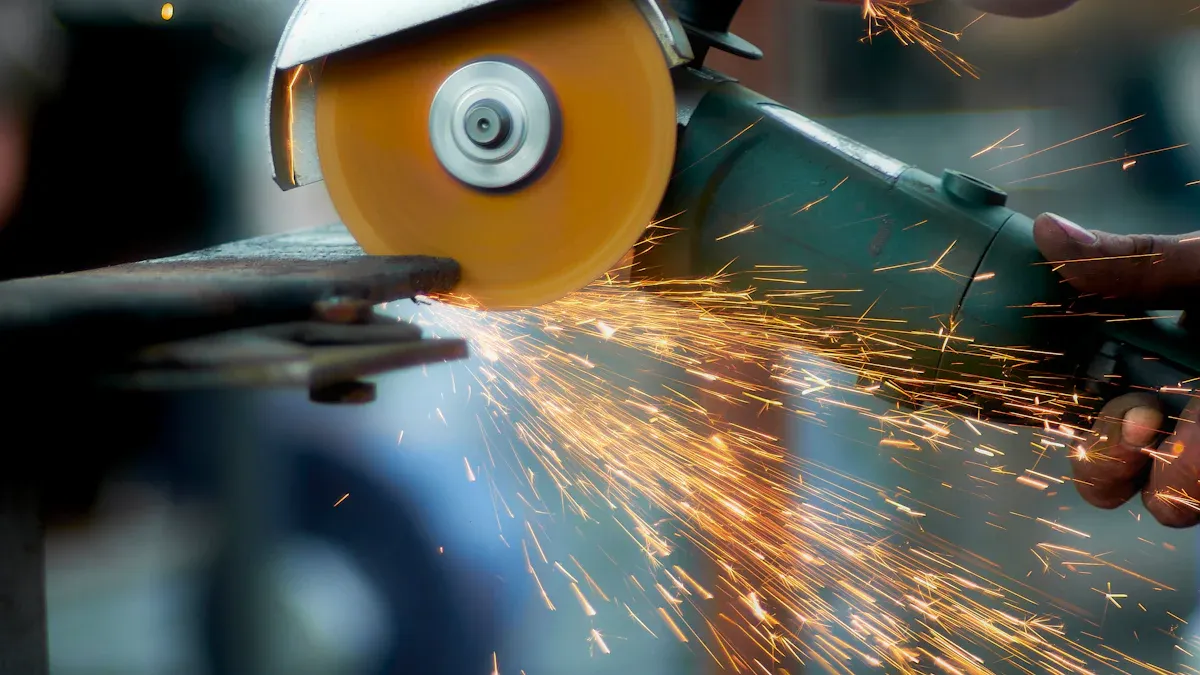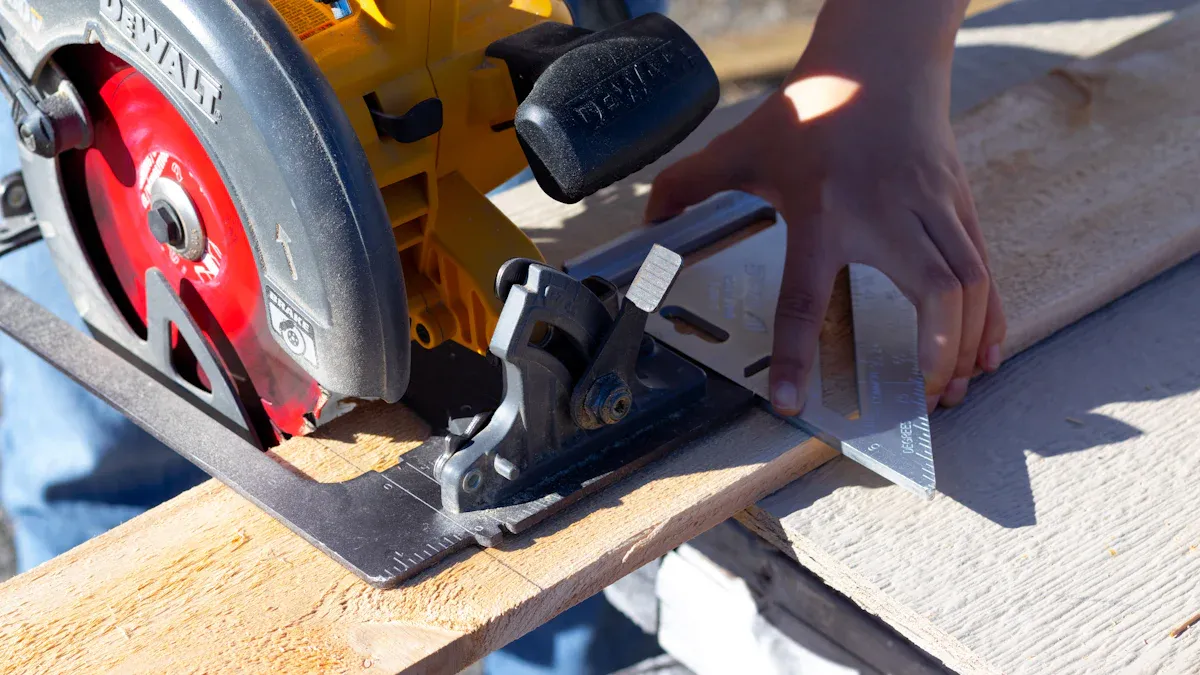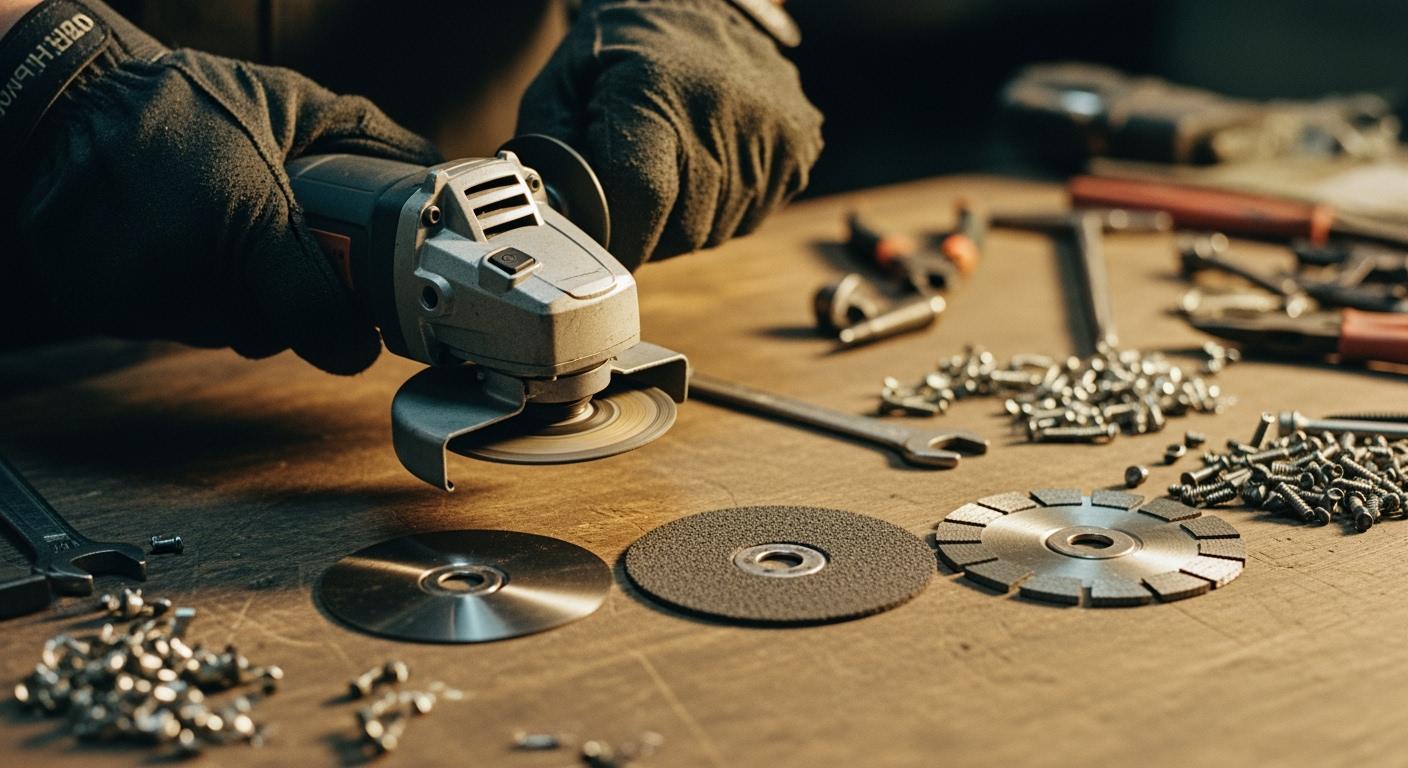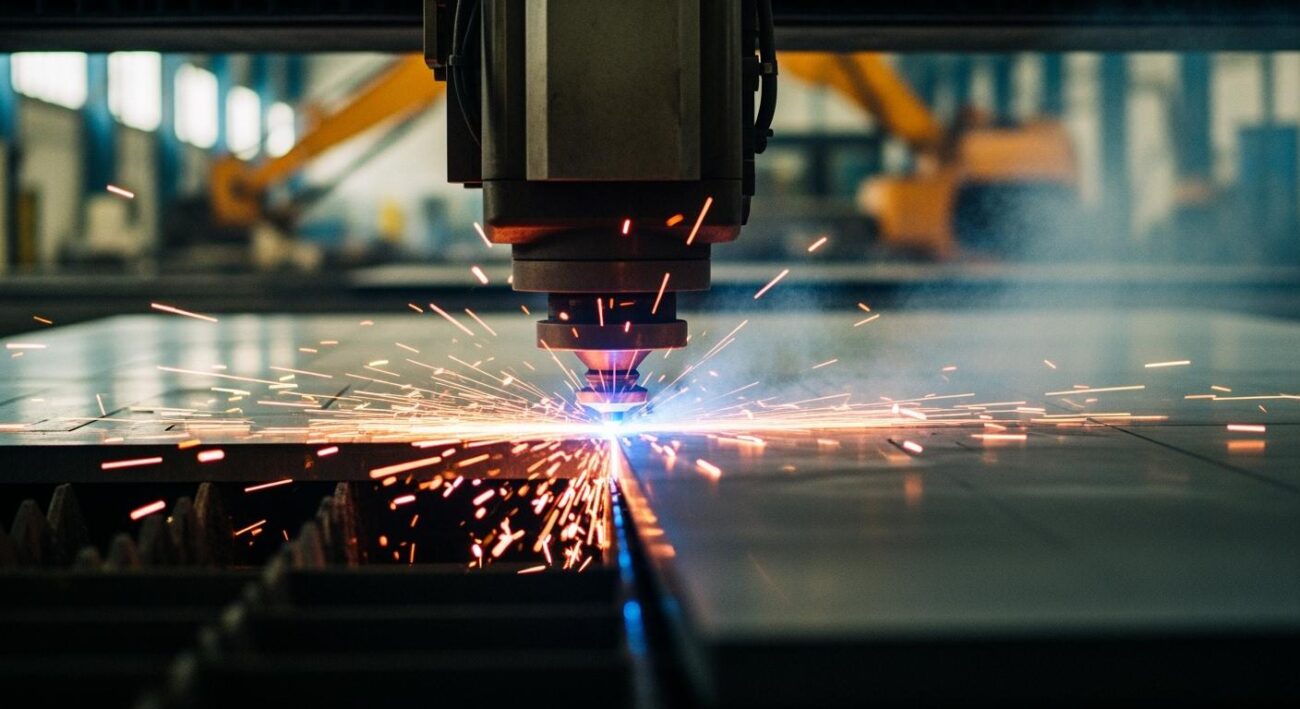Selecting the perfect cutting wheel is simple when you know what to look for. You make the right choice by understanding three core factors: wheel type, thickness, and abrasive material. This guide helps you achieve clean, efficient, and safe cuts on any material.
Did You Know? The global market for abrasive wheels was valued at USD 14.3 billion in 2024. Using the correct cutting wheel is vital for top performance in this growing industry.
Specialized brands like Aimgrind offer a wide range of cutting wheels to match any job perfectly.
Key Takeaways
- Choose a Type 1 flat wheel for deep, straight cuts. Use a Type 27 wheel for cutting flush against surfaces or in tight spots.
- Pick a thin wheel for fast, precise cuts on thin metal. Use a thick wheel for heavy-duty jobs and durability on thick materials.
- Match the abrasive material to the metal you are cutting. Use aluminum oxide for steel, INOX wheels for stainless steel, and silicon carbide for aluminum.
- Always wear safety glasses, gloves, and hearing protection. Check your wheel for damage before use. Make sure your grinder’s speed does not go over the wheel’s maximum speed.
Understanding Cutting Wheel Types

The first step in your selection process is to understand the two main cutting wheel types. Your choice between a Type 1 or Type 27 wheel depends entirely on the kind of cut you need to make. Knowing the difference between these types of cutting wheels ensures you have the right tool for the job.
Type 1 (Flat) Wheels
You will find that Type 1 wheels are the most common and versatile option. This cutting wheel has a completely flat profile. This simple design gives it excellent stability and helps it move smoothly through materials. It is the perfect choice when you need to make deep, straight cuts into a workpiece.
Because of their reliability, you can use these cutting wheels for many tasks, including:
- Metal fabrication
- General repair work
- Automotive and body work
- DIY projects
Type 27 (Depressed Center) Wheels
A Type 27 cutting wheel features a depressed center, also called a raised hub. This design allows your grinder’s locking nut to sit inside the wheel. This gives you a major advantage when you need to cut flush against a surface.
The raised hub provides better clearance and improves your view of the cut line. This makes the Type 27 wheel ideal for working at difficult angles or getting into tight corners.
Pro Tip: Choose a Type 27 wheel when you need to make a cut that is perfectly level with a surface or when you are working in a space with limited room to move your angle grinder. This is one of the most useful cutting wheel types for intricate jobs.
Selecting the Right Wheel Thickness
After choosing the wheel type, you need to consider its thickness. The thickness of a cutting wheel directly impacts its speed, precision, and durability. Your choice depends on the material you are cutting and the results you want to achieve. A thicker wheel offers stability, while a thinner one provides speed.
Thin Wheels for Speed and Precision
You should choose a thin cutting wheel for fast, clean, and precise cuts. These wheels typically measure between 1mm and 1.6mm thick. Their slim profile allows them to slice through metal with minimal effort and friction. This speed reduces heat buildup, which means less discoloration on your workpiece.
Using thinner cutting wheels is especially effective on materials like sheet metal or small-diameter rods. You will notice fewer burrs and less material waste, saving you time on cleanup.
Quick Comparison: Thin vs. Thick Wheels
Feature Thin Cutting Wheel Thick Cutting Wheel Cutting Speed Faster Slower Material Waste Reduced Increased Burrs Fewer More Friction Less More
Thicker Wheels for Durability
For heavy-duty jobs, you need a thicker cutting wheel. These wheels are generally over 3mm thick, with many options ranging from 3.2mm to 6.4mm. Their robust construction provides greater stability and a longer lifespan when tackling tough materials.
A thicker wheel resists bending and breaking under high pressure. This makes it the ideal choice for demanding applications.
You should use thicker cutting wheels for:
- Heavy-duty cutting tasks
- Making deep cuts into thick metals
- Rough cutting where durability is more important than a fine finish
- High-speed cutting applications that require extra stability
Choosing the right thickness ensures your tool performs safely and effectively for every project.
Matching the Abrasive to Your Material
You have chosen the wheel type and thickness. Now, you must select the right abrasive material. This step is crucial for matching wheels to your material. The abrasive grains on the wheel do the actual cutting. A simple rule guides your choice: the abrasive must be harder than the material you are cutting.
Think of it like this: you cannot cut a diamond with a piece of steel. The same principle applies here. Abrasives like diamond and silicon carbide are extremely hard. For example, silicon carbide scores a 9.5 on the Mohs hardness scale, making it perfect for tough materials.
Expert Insight: For unique or challenging materials, a standard wheel might not be enough. Specialized brands like Aimgrind develop custom abrasive formulas using materials like diamond, CBN, and ceramic alumina. This tailoring optimizes the abrasive’s shape, size, and concentration to deliver the best cutting performance for specific applications in aerospace, automotive, and electronics.
Abrasives for Standard Steel
For general-purpose cutting of carbon steel or mild steel, you will find that aluminum oxide is the best choice. Aluminum oxide wheels offer an excellent balance of strength, durability, and cost-effectiveness. This makes them the go-to cutting wheel for steel in most fabrication shops and maintenance operations.
When you need more aggressive cutting on steel, you can choose a wheel made from zirconia alumina. It is tougher and self-sharpens as it wears, giving it a longer life for heavy-duty jobs.
| Feature | Aluminum Oxide | Zirconia Alumina |
|---|---|---|
| Best For | General-purpose steel cutting | Heavy stock removal on steel |
| Durability | Good | Excellent |
| Cost | Lower | Higher |
| Aggressiveness | Moderate | High |
Using the right cutting wheel for steel ensures you get a clean cut without spending too much. For most everyday tasks, aluminum oxide wheels are the perfect solution.
The Best Cutting Wheel for Stainless Steel
Cutting stainless steel requires a special approach. You must use a cutting wheel for stainless steel that is specifically labeled as “contaminant-free” or “INOX-rated.” These wheels are free of iron, sulfur, and chlorine (Fe + S + Cl < 0.1%).
Why is this so important? If you use a standard cutting wheel for steel on stainless steel, it can transfer tiny iron particles onto the workpiece. When these particles get wet, they will cause rust spots on the surface. This contamination can ruin the appearance and integrity of the stainless steel, which is a major problem in industries like food processing and pharmaceuticals.
Always check the label to ensure you have the correct cutting wheels for stainless steel. This simple step prevents costly rework and ensures a professional finish. A contaminant-free aluminum oxide wheel is a great choice for this task.
The Right Cutting Wheel for Hard Metals
When you face extremely hard metals like titanium, Inconel, or hardened steel alloys, you need an abrasive that can handle the challenge. Ceramic alumina and silicon carbide are excellent choices for these applications.
- Ceramic Alumina: This advanced abrasive is known for its high friability. This means the grains fracture under pressure, constantly exposing new, sharp cutting edges. This self-sharpening action provides an aggressive, cool cut and an exceptionally long life. It is the ideal cutting wheel for hard metals.
- Silicon Carbide: This very hard and sharp abrasive is perfect for cutting titanium, especially in the aerospace industry where contamination is a concern. It provides fast stock removal and clean results.
For the toughest ferrous materials, like superalloys and heat-resistant steels, a Cubic Boron Nitride (CBN) wheel offers unmatched cutting performance. For non-ferrous hard materials like carbides and ceramics, a diamond wheel is the ultimate solution.
The Ideal Cutting Wheel for Aluminum
Aluminum is a soft metal with a low melting point. This property causes a common problem: the metal heats up, melts slightly, and clogs or “gums up” the abrasive grains on a standard wheel. This is known as loading, and it stops the wheel from cutting effectively.
To solve this, you need a cutting wheel for aluminum made with a specialized blend of silicon carbide. Silicon carbide is sharper than aluminum oxide and its structure helps prevent material from building up. This non-loading formula ensures the cutting wheel keeps working without interruption.
Using a dedicated cutting wheel for aluminum results in a faster, cleaner cut and prevents the frustration of a clogged wheel. It is the right tool for achieving smooth, professional results on any aluminum project.
Essential Safety for Using Cutting Wheels

You have the right wheel for your project. Now, you must focus on safety. Using power tools requires your full attention. Safety is non-negotiable when you work with cutting wheels. Following proper safety rules protects you from serious injury and ensures your work goes smoothly.
Wear Your Personal Protective Equipment (PPE)
You must always protect yourself before you start cutting. Sparks, metal fragments, and loud noise are all part of the job. Your personal protective equipment is your first line of defense.
Make sure you wear the following items every time:
- Safety Glasses and a Face Shield: Protect your eyes and face from flying debris.
- Gloves: Guard your hands against sharp edges and hot surfaces.
- Hearing Protection: Earmuffs or earplugs reduce the risk of hearing damage from the loud grinder.
- Respiratory Protection: A dust mask prevents you from inhaling harmful particles.
Inspect Your Wheel Before Each Use
You should always check your cutting wheel before you mount it on the grinder. A damaged wheel can shatter during use, which is extremely dangerous. This simple check takes only a few seconds.
Look for any signs of damage, such as:
- Cracks
- Chips
- Dents
- Discoloration
Important Safety Note: If you find any damage on a cutting wheel, do not use it. Discard the wheel immediately and get a new one. It is never worth the risk.
Match Grinder RPM to the Wheel’s Max Speed
Every cutting wheel has a maximum safe speed printed on its label. This speed is measured in Revolutions Per Minute (RPM). Your angle grinder also has an RPM rating. You must ensure the grinder’s RPM does not exceed the wheel’s maximum RPM.
| Your Grinder’s RPM | Wheel’s Max RPM | Safety Status |
|---|---|---|
| 10,000 RPM | 12,000 RPM | ✅ Safe to Use |
| 10,000 RPM | 8,000 RPM | ❌ DANGEROUS |
Operating a wheel above its rated speed can cause it to break apart violently. Always check both RPM ratings before you begin work. This is one of the most critical safety steps.
You now have a simple process for choosing the right cutting wheel:
- Pick your wheel type (1 or 27).
- Select the thickness.
- Match the abrasive to your material.
Following these steps is the best choice for efficient cutting and ensures great cutting performance. For specialized projects, explore high-quality cutting wheels from Aimgrind to guarantee the best cutting performance. Grind with Passion, Achieve with Aim.
FAQ
What is the main difference between Type 1 and Type 27 wheels?
You use a Type 1 (flat) wheel for making deep, straight cuts. You should choose a Type 27 (depressed center) wheel for flush cutting. Its raised hub gives you better clearance and visibility in tight spaces.
Can you use one cutting wheel for all metals?
No, you should not use one wheel for all metals. You must match the abrasive material to the metal you are cutting. For example, use an INOX-rated wheel for stainless steel to prevent rust and a silicon carbide wheel for aluminum to prevent clogging.
Why is the RPM rating on a cutting wheel so important?
The RPM rating is a critical safety limit. You must ensure your grinder’s RPM does not go over the wheel’s maximum RPM. Exceeding this limit can cause the wheel to shatter, leading to serious injury. Always check the labels. ✅
How do you stop a wheel from clogging when cutting aluminum?
You can prevent clogging by using the correct wheel. Choose a cutting wheel made with silicon carbide specifically for aluminum. This special formula stops the soft metal from melting and sticking to the wheel, ensuring a clean and continuous cut.
See Also
Selecting the Optimal Grinding Disc for Your Circular Saw Blade
Picking the Premier Grinding Abrasive for Your Carbide Tooling Needs
Determining the Ideal Metal Grinding Disc for Your Specific Project
Finding the Most Effective Grinding Wheel Dresser for Your Workshop
Picking the Perfect Grinding Wheel for Your Stainless Steel Applications
Contact Us
For More Grinding Solution or Customized Abrasive Tools



